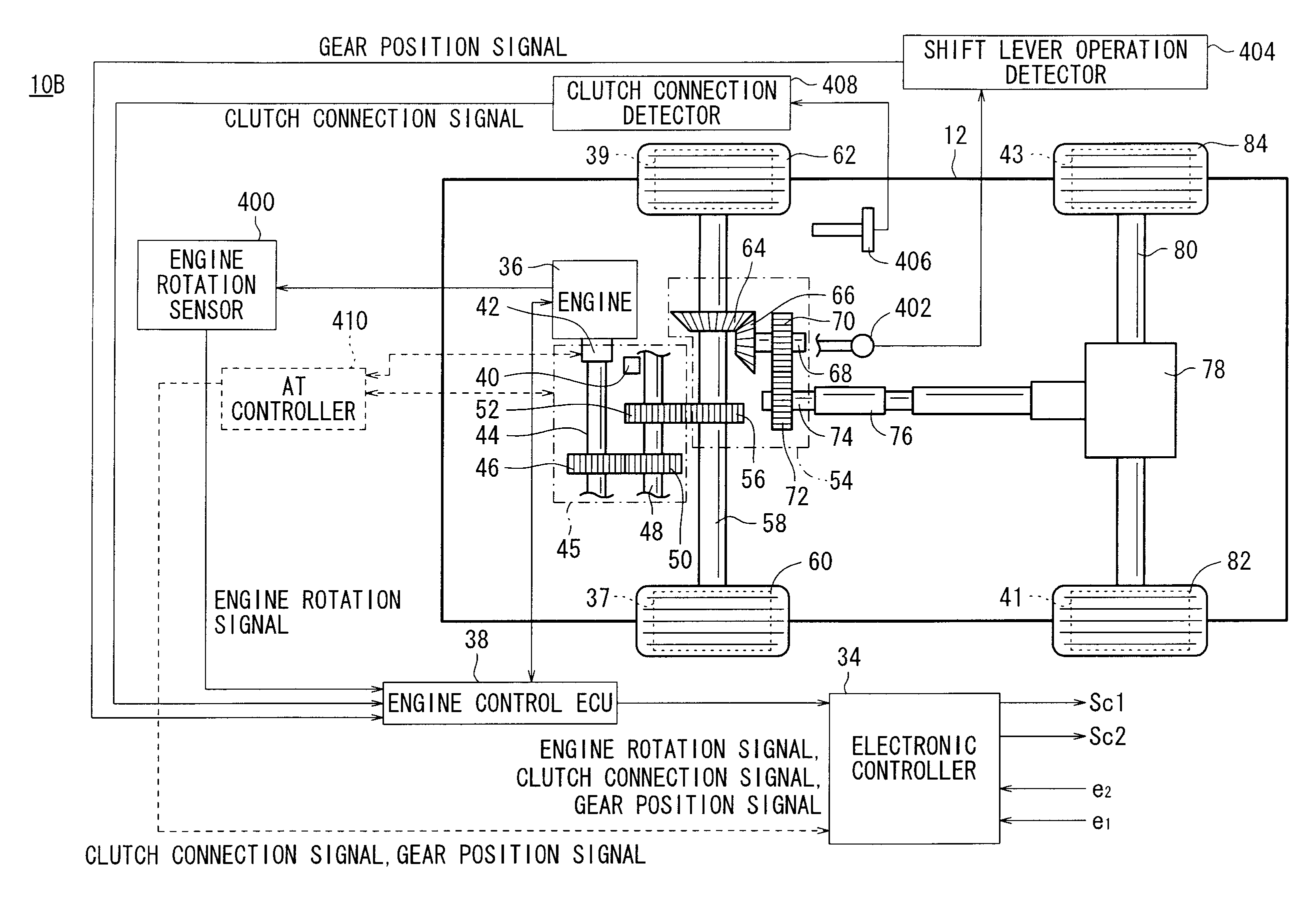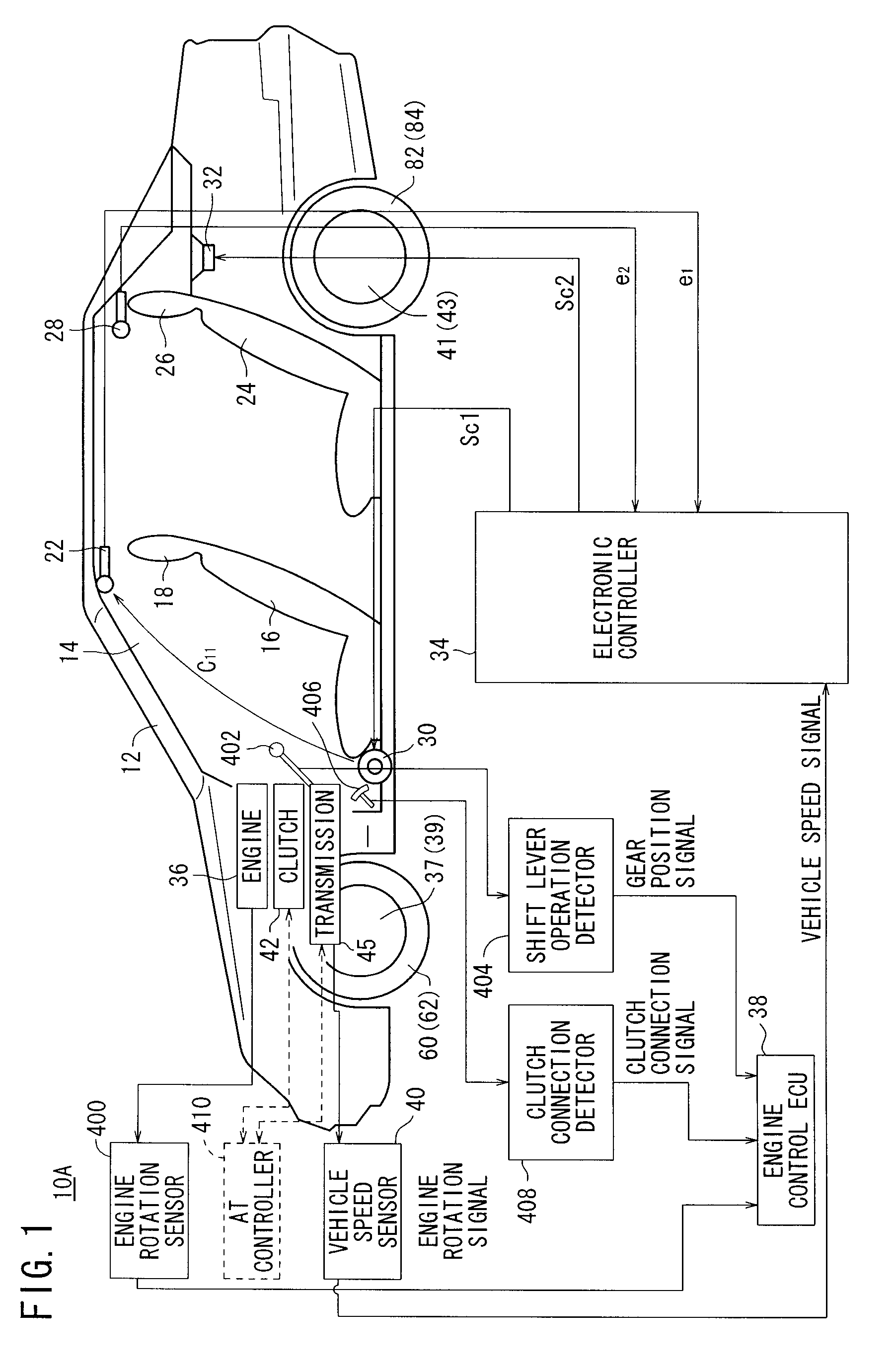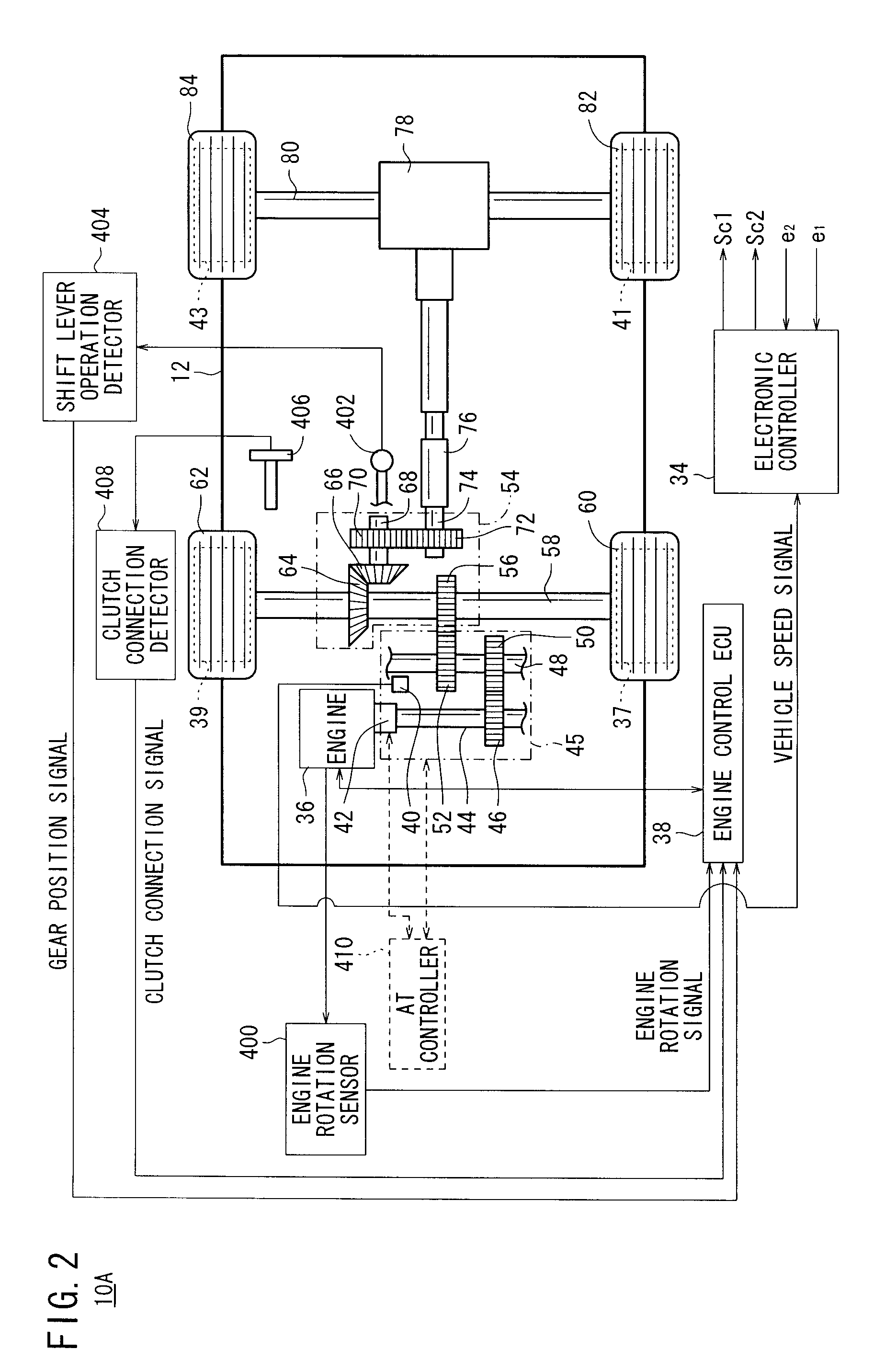Vehicular active noise control system
a technology of active noise control and vehicle, applied in the direction of noise generation, ear treatment, instruments, etc., can solve the problems of long and heavy, vehicle weight as a whole, differential noise, etc., and achieve the effect of reliably cancelling out driveline nois
- Summary
- Abstract
- Description
- Claims
- Application Information
AI Technical Summary
Benefits of technology
Problems solved by technology
Method used
Image
Examples
first embodiment
[0055]FIGS. 1 and 2 show in block form a vehicular active noise control system (hereinafter referred to as “system”) 10A according to the present invention, which is incorporated in a vehicle 12. In FIG. 2, the vehicle 12 is shown as a 4WD (AWD) vehicle.
[0056]The system 10A comprises a microphone 22 disposed on a roof lining of the vehicle 12 near the head rest 18 of a front seat 16 in a passenger compartment 14, or specifically near the position of an ear of a passenger, not shown, seated on the front seat 16, a microphone 28 disposed near the head rest 26 of a rear seat 24, a speaker 30 mounted on a door near the front seat 16, a speaker 32 disposed behind the rear seat 24, and an electronic controller 34.
[0057]The vehicle 12 has an engine 36 that is controlled by an engine control ECU 38. The engine control ECU 38 is supplied with an engine rotation signal from an engine rotation sensor (engine rotational speed detector) 400. The engine rotation signal is made up of engine rotati...
second embodiment
[0104]In FIGS. 7 and 8, if the vehicle 12 is an automatic transmission vehicle, then the AT controller 410 supplies the electronic controller 34 with the gear position signal and the clutch connection signal. However, it is assumed that the vehicle 12 is a manual transmission vehicle in the second embodiment and other subsequent embodiments.
[0105]When the switch controller 302 is supplied with the clutch connection signal from the engine control ECU 38, the switch controller 302 outputs a disconnection signal Ss indicating that the clutch 42 has disconnected the transmission 45 from the engine 36, to the control circuit 104 and the switch 300. When the disconnection signal Ss is not input to the switch 300, the switch 300 is turned on, supplying the engine rotation signal to the control circuit 104. When the disconnection signal Ss is input to the switch 300, the switch 300 is turned off, stopping supplying the engine rotation signal to the control circuit 104.
[0106]When the disconn...
third embodiment
[0114]A system 10C according to the present invention will be described below with reference to FIGS. 10 through 12.
[0115]In the system 10C, the electronic controller 34 is supplied with the vehicle speed signal from the vehicle speed sensor 40, and is also supplied with the engine rotation signal, the gear position signal, and the clutch connection signal from the engine control ECU 38. Based on the vehicle speed signal, the engine rotation signal, the gear position signal, and the clutch connection signal, the electronic controller 34 generates control signals Sc1, Sc2. The electronic controller 34 has a switch 300 and a switch controller 302. The switch 300 is a selector switch which supplies the engine rotation signal to the control circuit 104 when the disconnection signal Ss is not input to the switch 300, and supplies the vehicle speed signal to the control circuit 104 when the disconnection signal Ss is input to the switch 300.
[0116]When the disconnection signal Ss is not in...
PUM
 Login to View More
Login to View More Abstract
Description
Claims
Application Information
 Login to View More
Login to View More - R&D
- Intellectual Property
- Life Sciences
- Materials
- Tech Scout
- Unparalleled Data Quality
- Higher Quality Content
- 60% Fewer Hallucinations
Browse by: Latest US Patents, China's latest patents, Technical Efficacy Thesaurus, Application Domain, Technology Topic, Popular Technical Reports.
© 2025 PatSnap. All rights reserved.Legal|Privacy policy|Modern Slavery Act Transparency Statement|Sitemap|About US| Contact US: help@patsnap.com



